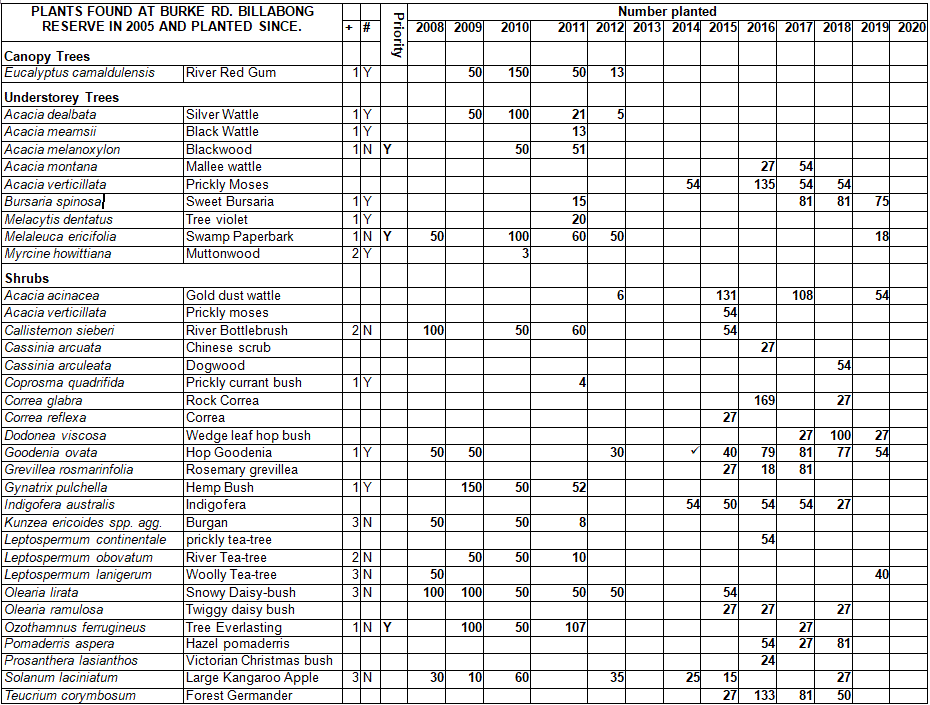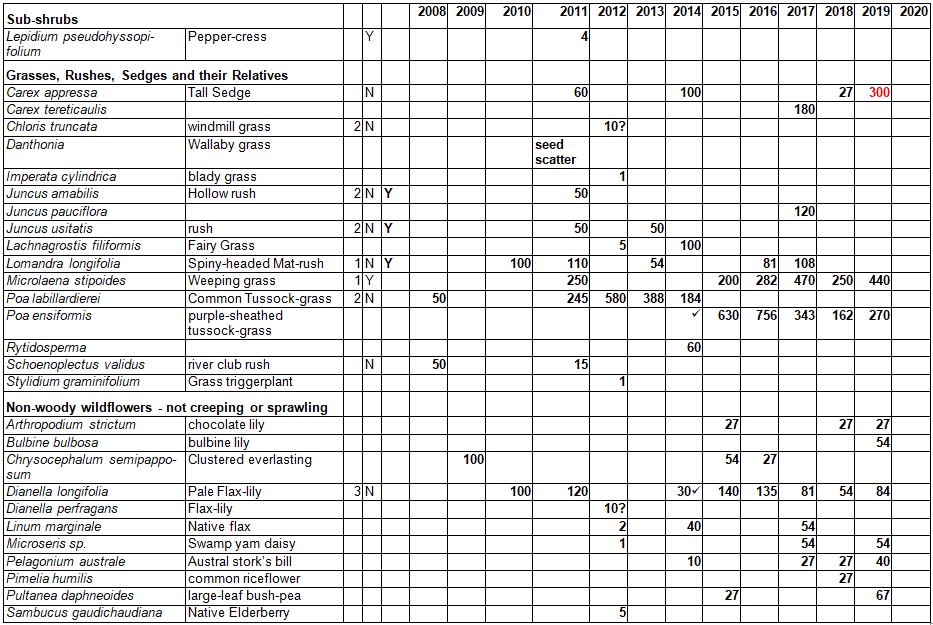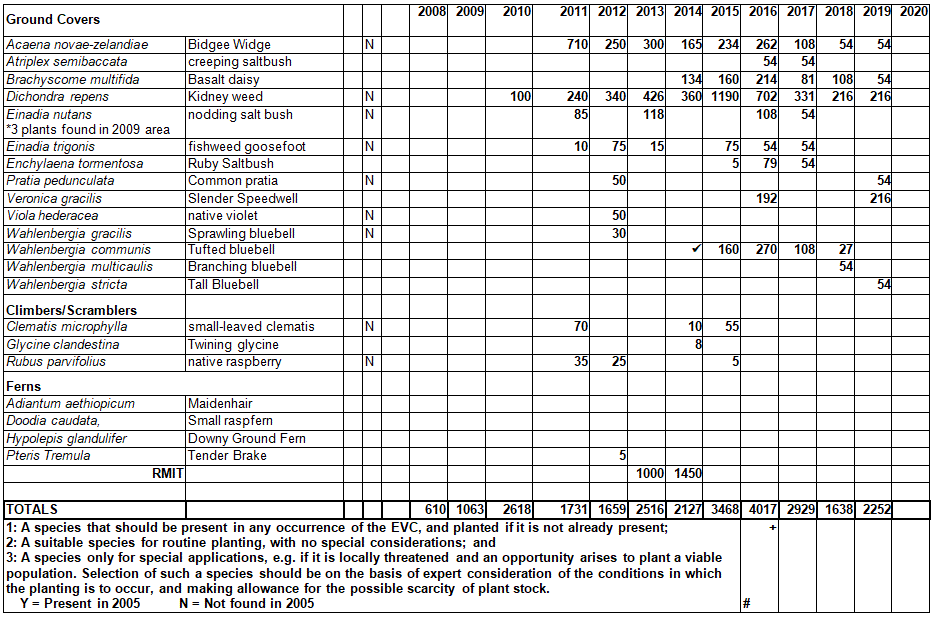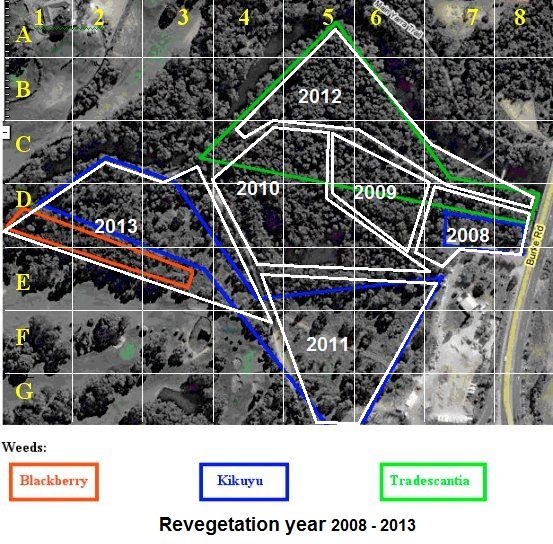
Site map 2007
|
August 2007 - First weeding work done near Chris Cross car park. |
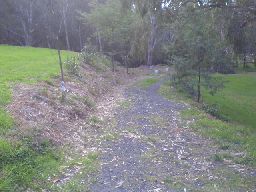 November 2007 - First planting of approx 40 Kangaroo Apple Solanum lanciniatum, 10 flax lillies Dianella revoluta, and 3 Goodenia ovata planted along track near Chris Cross garden centre.
November 2007 - First planting of approx 40 Kangaroo Apple Solanum lanciniatum, 10 flax lillies Dianella revoluta, and 3 Goodenia ovata planted along track near Chris Cross garden centre. |
January 2008 - Slashing of 'Trad' Tradescantia albiflora in 2008 reveg area and weeding in Billabong commenced. Weeding continued in 2008 reveg area until September 2008. |
25 September 2008 - 2 members of the Committee of Management and Staff from the Box Hill Office, of the Department of Sustainability & Environment had a planting day and planted 400 plants; Snowy Daisy Bush Olearia lirata, Prickly Tea tree Leptospemum continentale, Wooly tea tree L. lanigerum, Swamp Paperbark Melaleuca ericifolia, River Bottle Brush Callistemon sieberi. Burke Rd. Billabong formally 'reserved' under Crown Lands Act, and Committee of Management appointed. |
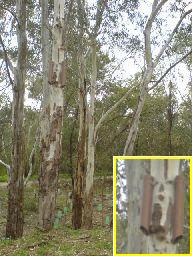 1 October 2008 - Installed 10 bat tubes on 5 river red gums near car park
1 October 2008 - Installed 10 bat tubes on 5 river red gums near car park
|
November 2008 - RMIT Conservation & Land Management students under the tutelage of Bruce Partland completed the draft Management Plan - THANK YOU ALL. The Committee of Management was incorporated on 5/6 November 2008. |
February 2009 - Starting preparation for 2009 planting in area south of the bike path and west of elevated area. |
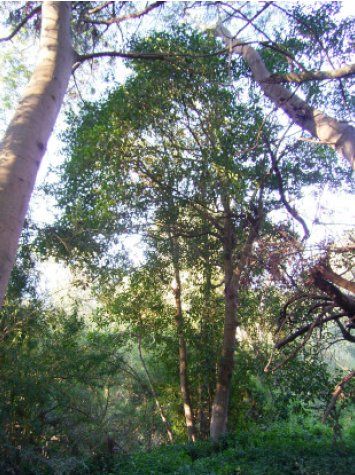 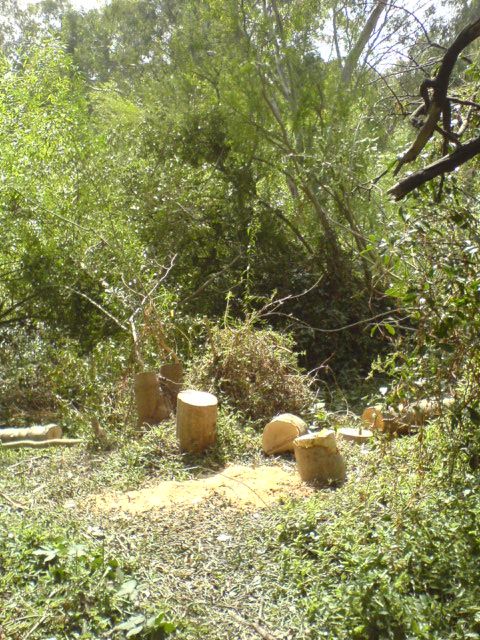 March 2009 - Melbourne Water advised that their contractors had mistaken the copse of Muttonwood trees (Rapanea howittiana) for Sweet Pittosporum and unfortunately ringbarked and poisoned them. When the mistake was realised the ringbarked trunks were lopped below the ringbark and 4000 cuttings were taken. Melbourne Water plans to plant 500 of the resulting plants in the area. None of these cuttings survived and other plants were sourced and planted in spring 2010.
March 2009 - Melbourne Water advised that their contractors had mistaken the copse of Muttonwood trees (Rapanea howittiana) for Sweet Pittosporum and unfortunately ringbarked and poisoned them. When the mistake was realised the ringbarked trunks were lopped below the ringbark and 4000 cuttings were taken. Melbourne Water plans to plant 500 of the resulting plants in the area. None of these cuttings survived and other plants were sourced and planted in spring 2010.
|
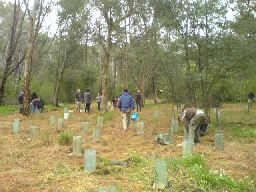 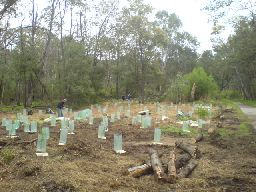 9 September 2009 - RMIT Conservation & Land Management Students planted 500 plants in the 2009 reveg area. Plants were River red gum (Eucalyptus camaldulensis), Silver Wattle Acacia dealbata, Tree Everlasting Ozothamnus ferruginius, Snowy Daisy bush Olearia lirata, Native Hemp bush Gynatrix pulchella, Wedge-leaf Hop bush Dodonea viscosa, Goodenia Goodenia ovata, and Clustered everlasting Chrysocephalum semipapposum. - approx 2 hours work x 20 students. THANKS TO ALL THE RMIT STUDENTS & STAFF, DAREBIN PARKLANDS FOR TREE GUARDS. 9 September 2009 - RMIT Conservation & Land Management Students planted 500 plants in the 2009 reveg area. Plants were River red gum (Eucalyptus camaldulensis), Silver Wattle Acacia dealbata, Tree Everlasting Ozothamnus ferruginius, Snowy Daisy bush Olearia lirata, Native Hemp bush Gynatrix pulchella, Wedge-leaf Hop bush Dodonea viscosa, Goodenia Goodenia ovata, and Clustered everlasting Chrysocephalum semipapposum. - approx 2 hours work x 20 students. THANKS TO ALL THE RMIT STUDENTS & STAFF, DAREBIN PARKLANDS FOR TREE GUARDS. |
 | THE FIRST BAT WAS FOUND 22 MAY 2010 - pictured at the top of the tube. The microbat stayed in the same tube until late July when it shifted tubes. Pictured - at the top of the new tube and out of the tube. It is a male Gould's Wattled bat (Chalinolobus gouldii) and in torpor. | 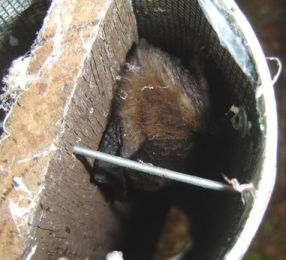 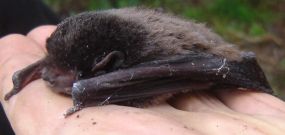 |
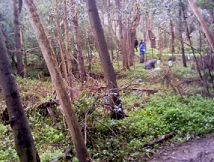 September/October 2010 - RMIT Conservation & Land Management Students and Friends of Burke Rd. Billabong planted 950 plants in the 2010 and 2013 reveg area. Plants were River red gum (Eucalyptus camaldulensis), Silver Wattle Acacia dealbata, Tree Everlasting Ozothamnus ferruginius, Snowy Daisy bush Olearia lirata, Native Hemp bush Gynatrix pulchella, Goodenia Goodenia ovata, Spiny-headed Mat-rush , (Lomandra longifolia) and Pale Flax-lily Dianella longifolia . THANKS TO ALL THE RMIT STUDENTS & STAFF, FRIENDS OF BURKE RD. BILLABONG. September/October 2010 - RMIT Conservation & Land Management Students and Friends of Burke Rd. Billabong planted 950 plants in the 2010 and 2013 reveg area. Plants were River red gum (Eucalyptus camaldulensis), Silver Wattle Acacia dealbata, Tree Everlasting Ozothamnus ferruginius, Snowy Daisy bush Olearia lirata, Native Hemp bush Gynatrix pulchella, Goodenia Goodenia ovata, Spiny-headed Mat-rush , (Lomandra longifolia) and Pale Flax-lily Dianella longifolia . THANKS TO ALL THE RMIT STUDENTS & STAFF, FRIENDS OF BURKE RD. BILLABONG. | |
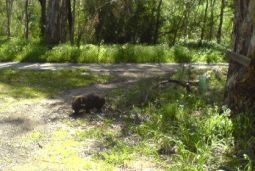  October 2010 - A wombat was seen (and photos taken) walking along the bike path, turning off to chew some Poas, before running off into the bush. October 2010 - A wombat was seen (and photos taken) walking along the bike path, turning off to chew some Poas, before running off into the bush. | |
1 November 2010 - After 60mm of rain over 30 hours the billabong flooded. The river level at Heidelberg reached 7.49 metres. Water covered the bike path at several places, and the billabong was full to the brim. | |
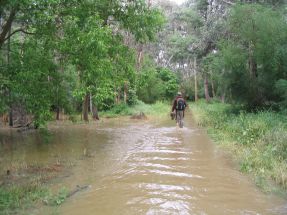 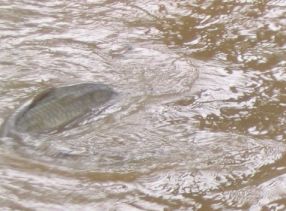 -walking along the bike path carp swimming on the bike path- | |
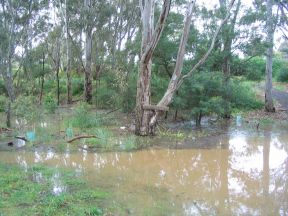 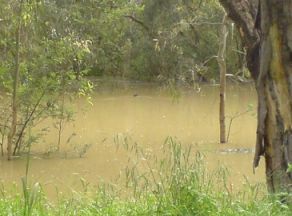 -Junction of the bike path and Burke Rd. access track the billabong full to the brim- | |
The Billabong was again topped up on 30 November 2010, 15 January 2011, 5 February 2011, 12 April 2011, 27 November 2011 and 26 December 2011. The billabong finally became dry in the first week of December 2012. | |
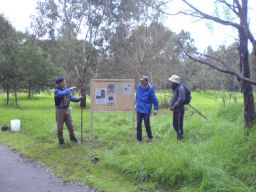 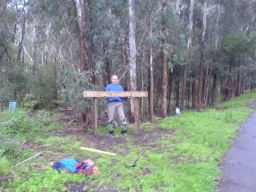 October 2010 - Two notice boards were erected at the Chris Cross / Yarra trail junction and at the south end of the reserve. Reserve signs were placed at Burke Rd. Bridge entrance and at the pedestrian bridge. The sign boards are made from steel fencing panel and marine ply at a cost of $55 each. Signs are laminated and screwed to the marine ply. Details October 2010 - Two notice boards were erected at the Chris Cross / Yarra trail junction and at the south end of the reserve. Reserve signs were placed at Burke Rd. Bridge entrance and at the pedestrian bridge. The sign boards are made from steel fencing panel and marine ply at a cost of $55 each. Signs are laminated and screwed to the marine ply. Details | |
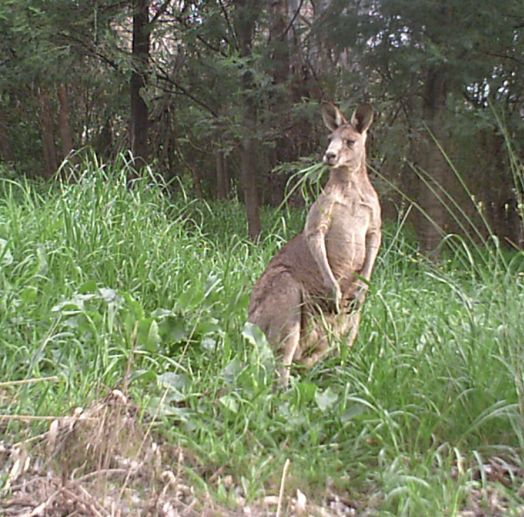 October 2010 - A 'trail cam' was installed in June 2011 which photographed an eastern grey kangaroo over several months. The camera drowned in the flood of December 2011. October 2010 - A 'trail cam' was installed in June 2011 which photographed an eastern grey kangaroo over several months. The camera drowned in the flood of December 2011. | |
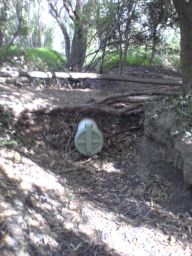 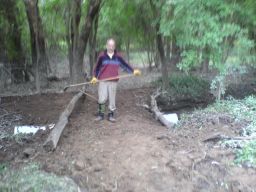 In January and February 2012, a pipe with a one way valve was installed into the drain from the billabong to the river. In January and February 2012, a pipe with a one way valve was installed into the drain from the billabong to the river. | |
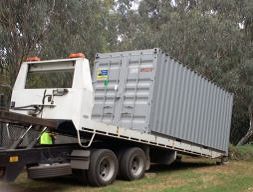 March 2013 - A shipping container was purchased and delivered to the site for storage of tools and equipment. March 2013 - A shipping container was purchased and delivered to the site for storage of tools and equipment. | |
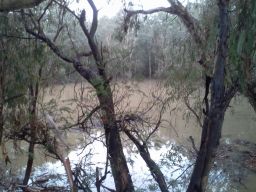 After approx. 90mm of rain on 31 May - 1 June 2013, the Billabong was again filled. The river rose to 6.69m with water covering the main path near the culvert by about 100mm. The one way pipe and levee in the drain raised the previous 'high' level of the billabong by about 600mm, and turned the 'peninsular' into an island. After approx. 90mm of rain on 31 May - 1 June 2013, the Billabong was again filled. The river rose to 6.69m with water covering the main path near the culvert by about 100mm. The one way pipe and levee in the drain raised the previous 'high' level of the billabong by about 600mm, and turned the 'peninsular' into an island. | |
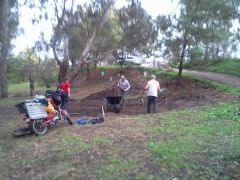 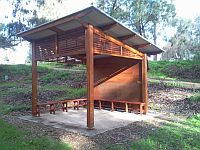 28 July 2013, work started on a picnic shelter with excavation of the base. The shelter was finished on 30th August 2013. Seats were installed and the shelter stained later. 28 July 2013, work started on a picnic shelter with excavation of the base. The shelter was finished on 30th August 2013. Seats were installed and the shelter stained later. | |
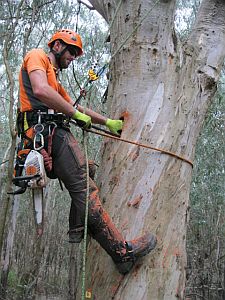 12th May 2016, an arborist (Treetec Arboriculture & Ecology, www.treetec.net.au) cut chainsaw hollows into trees at the reserve to provide habitat for gliders and microbats, and to collect data on the usage of hollows as part of a Latobe University research project. Fourteen (14) glider hollows were cut, and about forty (40) bat cavities cut. More details.
12th May 2016, an arborist (Treetec Arboriculture & Ecology, www.treetec.net.au) cut chainsaw hollows into trees at the reserve to provide habitat for gliders and microbats, and to collect data on the usage of hollows as part of a Latobe University research project. Fourteen (14) glider hollows were cut, and about forty (40) bat cavities cut. More details.
| |
22 October 2018 - Melbourne Water commenced work to pump water from the Yarra river's environmental flow into both Burke Rd. and Willsmere billabongs. 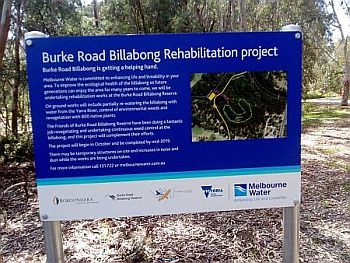 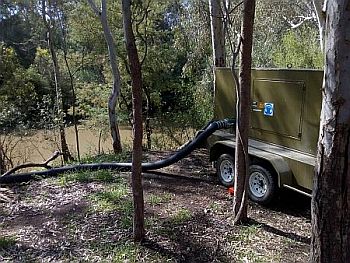 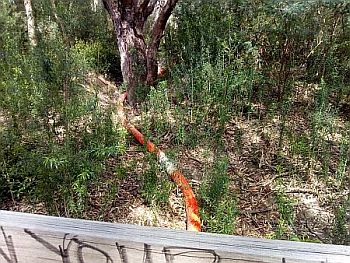 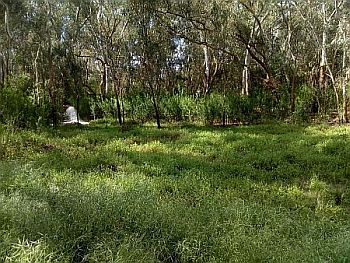 The water from the short first day dispersed overnight. After the second day of pumping the water was at 150mm, and some was visble above the vegetation. It created quite a waterfall leaving the pipe. | |
25 October 2018 - Melbourne Water continued to pump water from the Yarra river's environmental flow into both Burke Rd. and Willsmere billabongs.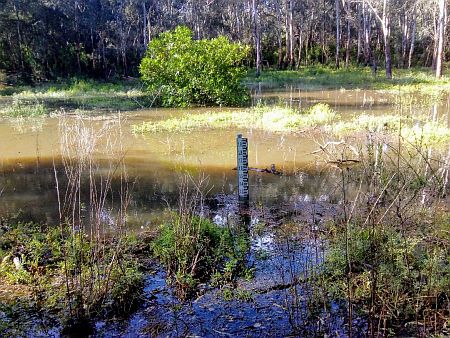 The water from the first two days dispersed overnight. About half the water from 24 October remained and with further pumping today, the water was covering the vegetation in many parts.
The water from the first two days dispersed overnight. About half the water from 24 October remained and with further pumping today, the water was covering the vegetation in many parts. | |
3 November 2018 - Checked billabong for water. All dry. Soil around gauge was damp but not muddy.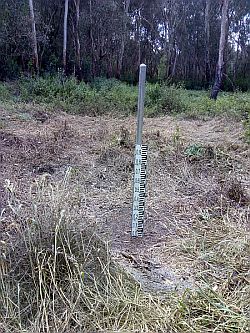
| |
11 June 2021 - The river rose to 5.2m due to local rain. The river rose to 6.8m on Saturday/Sunday 12/13 June due to floodwater from the Upper Yarra and the billabong filled to capacity. It filled again on 6-Sep-21 to 6.17m, and on 16-Oct-21 to 6.70m. 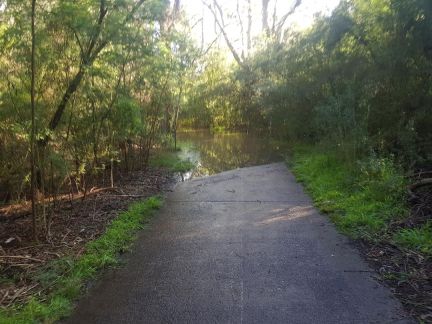 The river was over the path near the culvert.  The billabong was full to capacity. | |
14 October 2022 - The river rose to 8.565m, the highest level (03-Feb-05 - 8.530m) since our records began in 1975. It filled again on 29 October to 8.07m on 28 October. 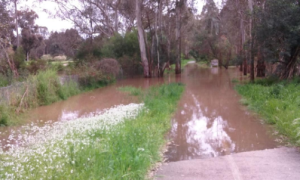 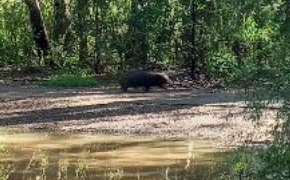 Photo left - southern approach to BRBR (behind MW pump station) Photo left - southern approach to BRBR (behind MW pump station)Photo right - homeless wombat walking on Yarra trail. Photo below - Main Yarra trail 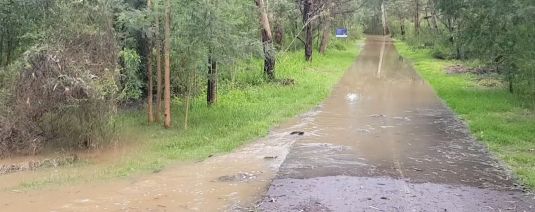
|
